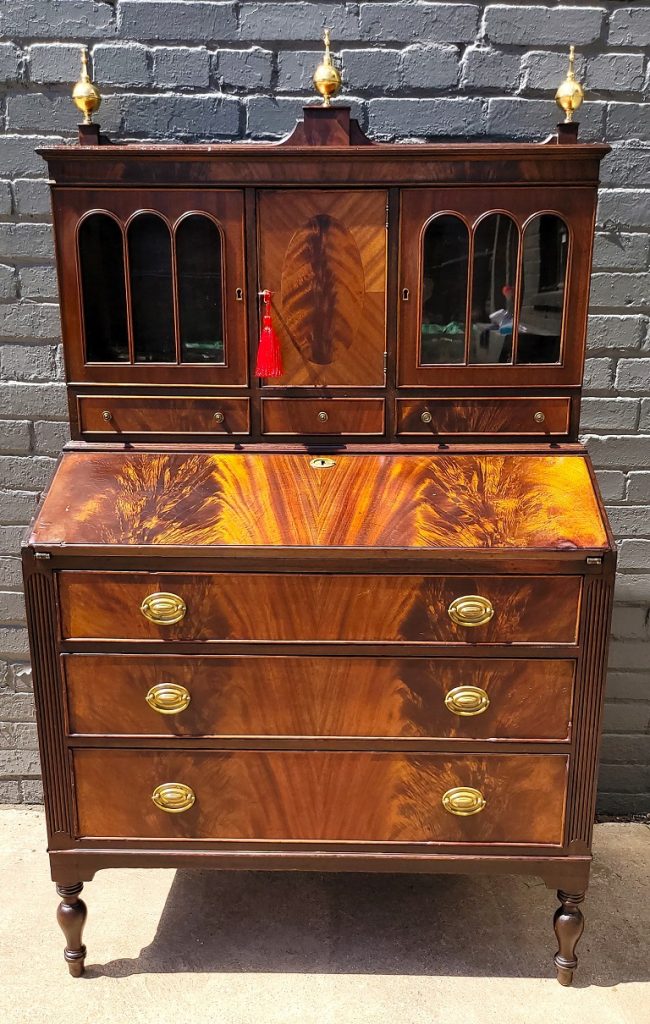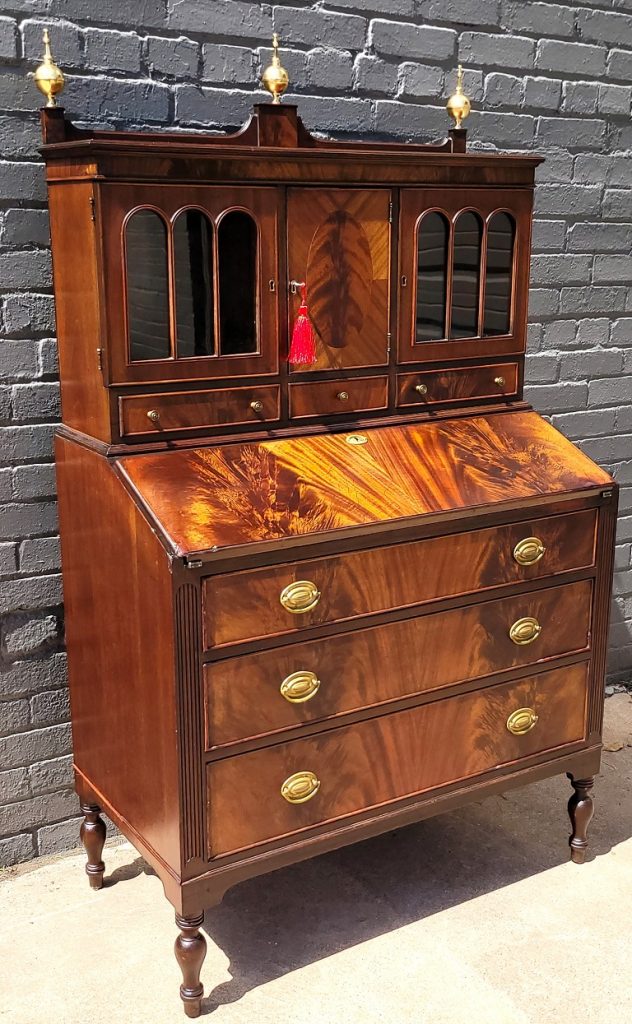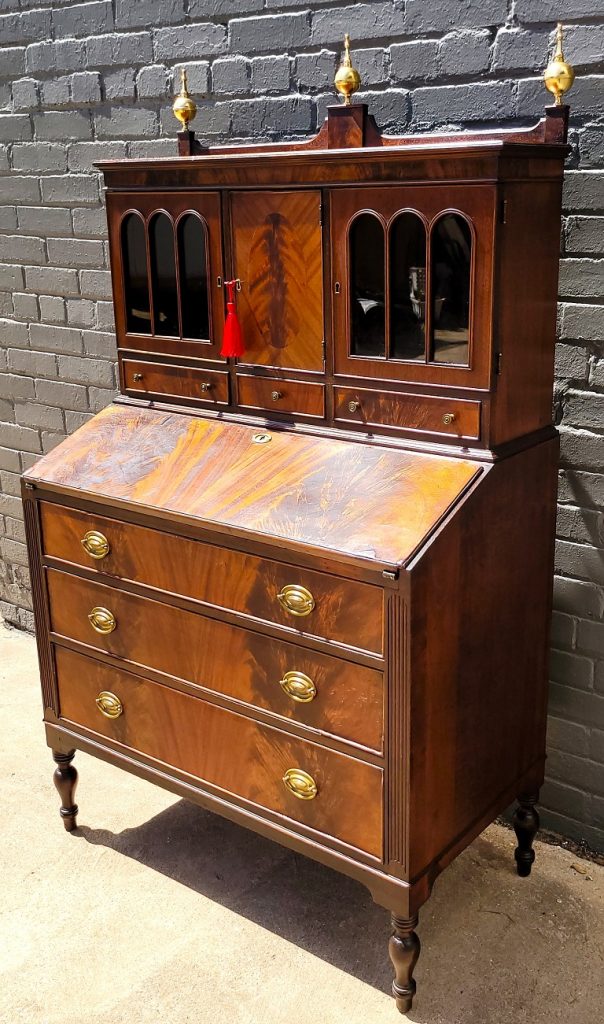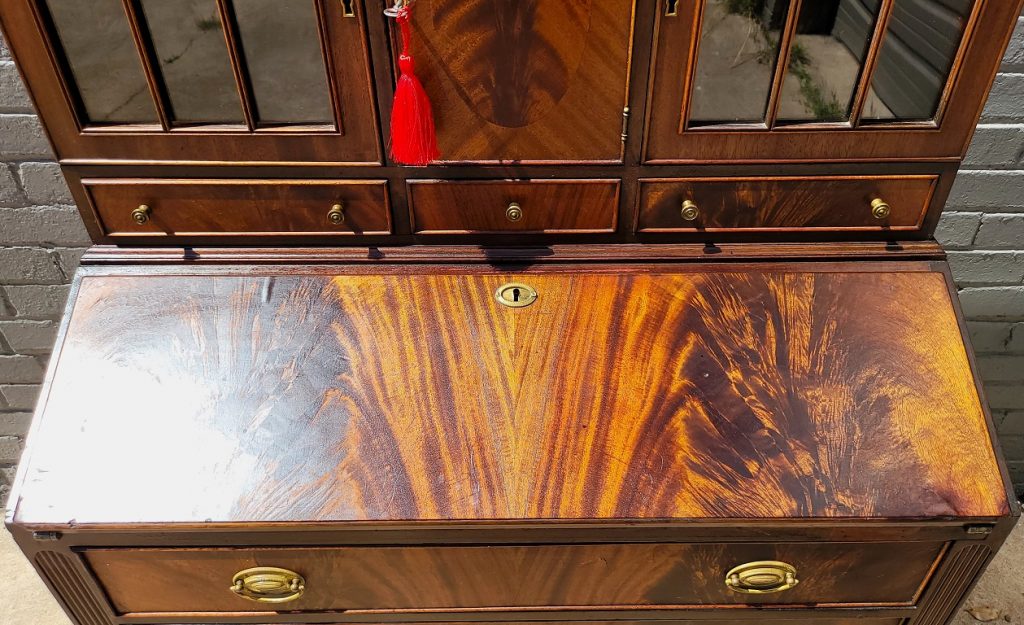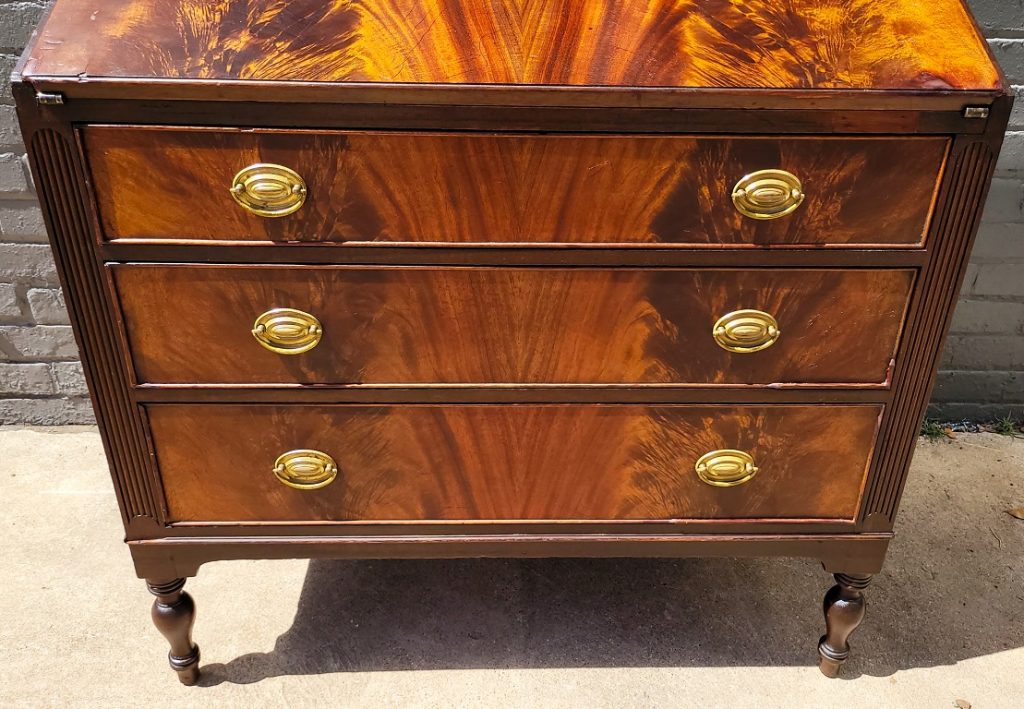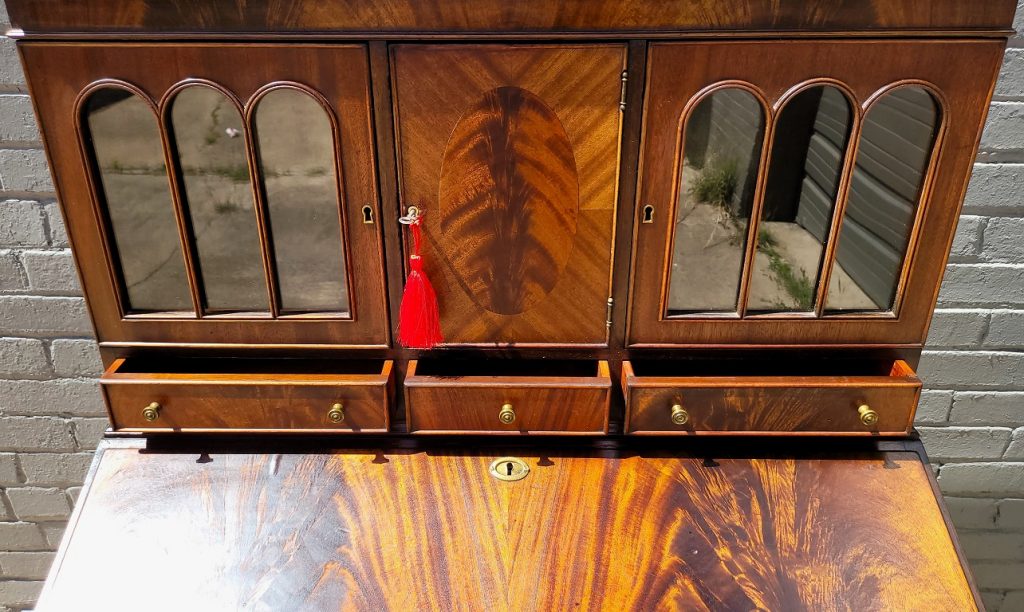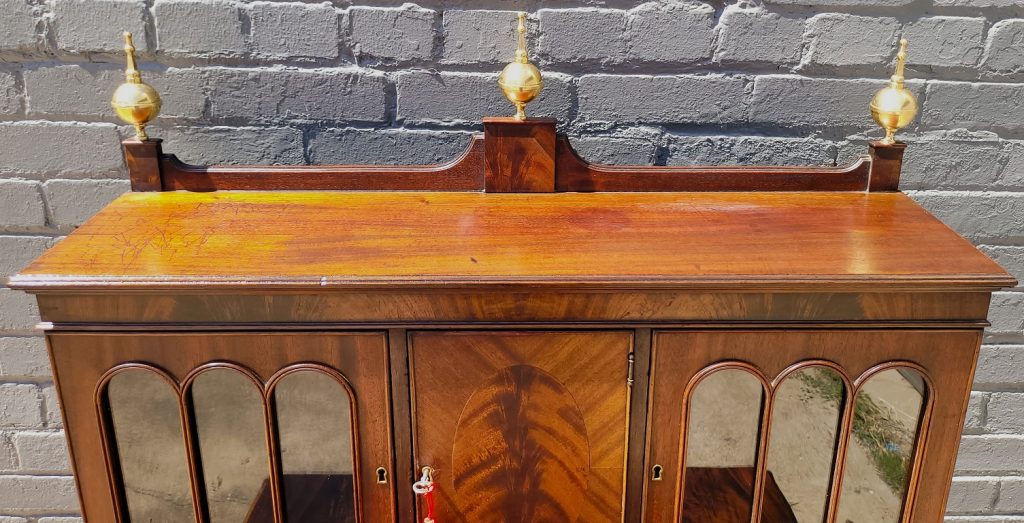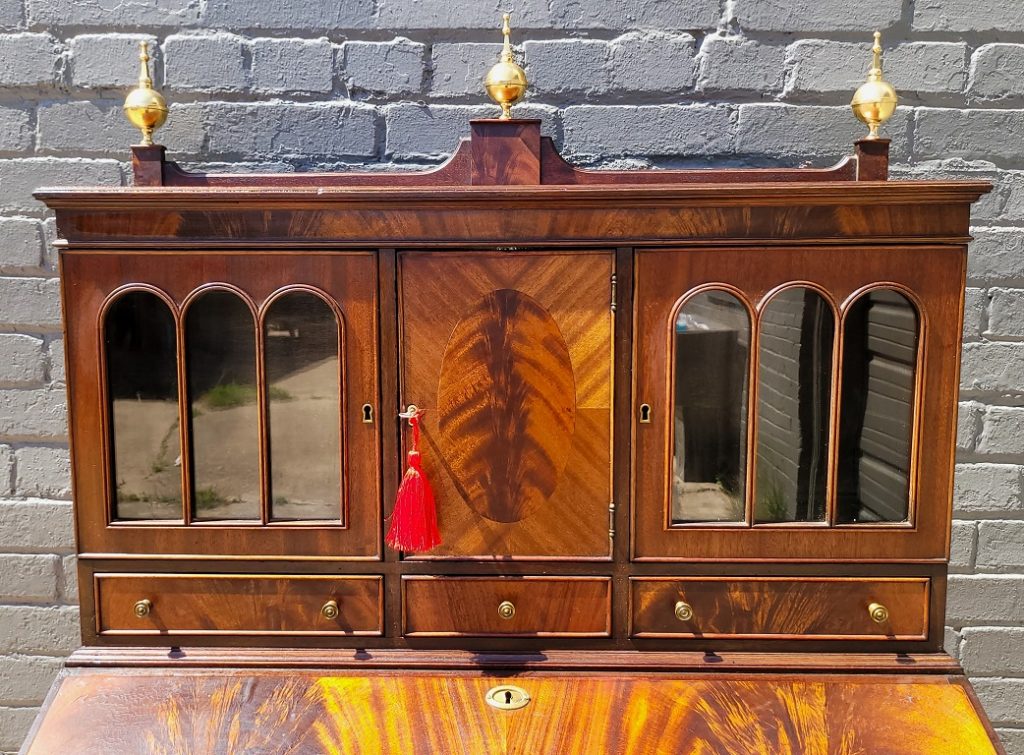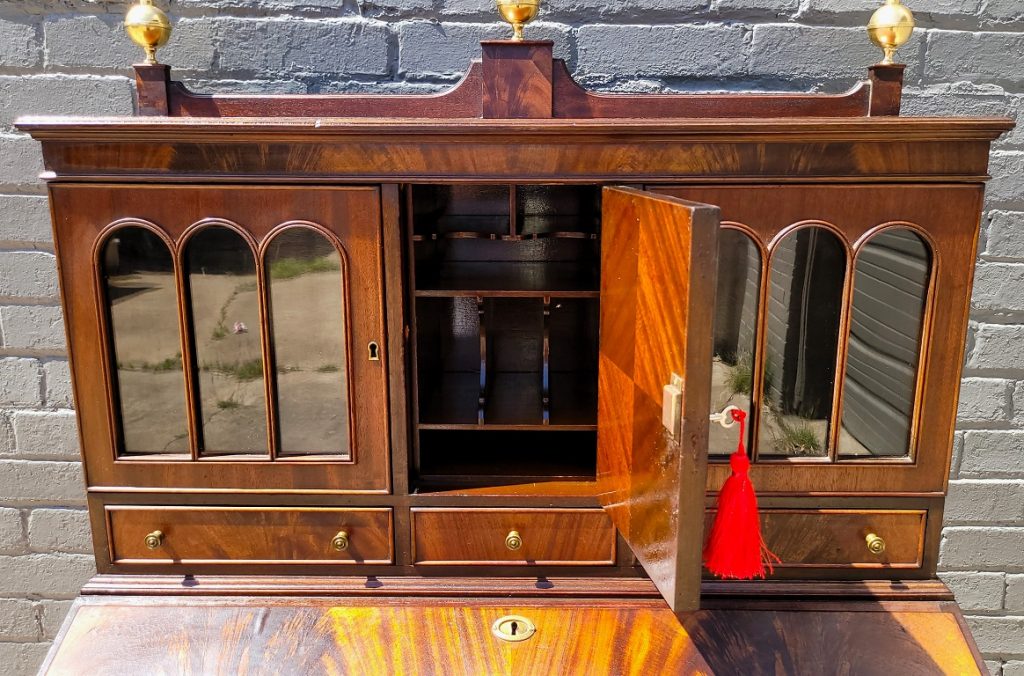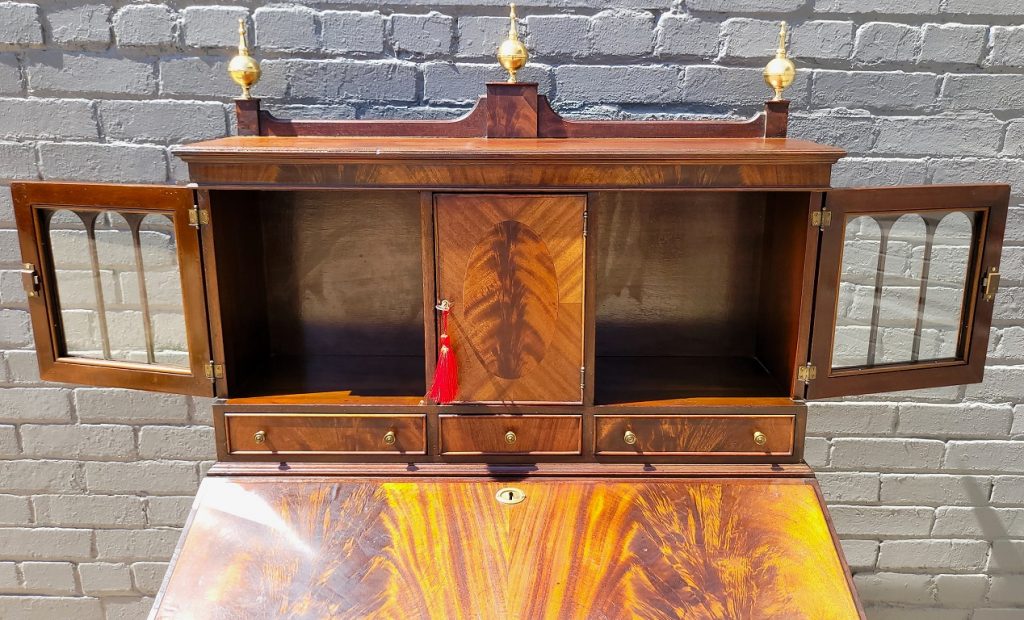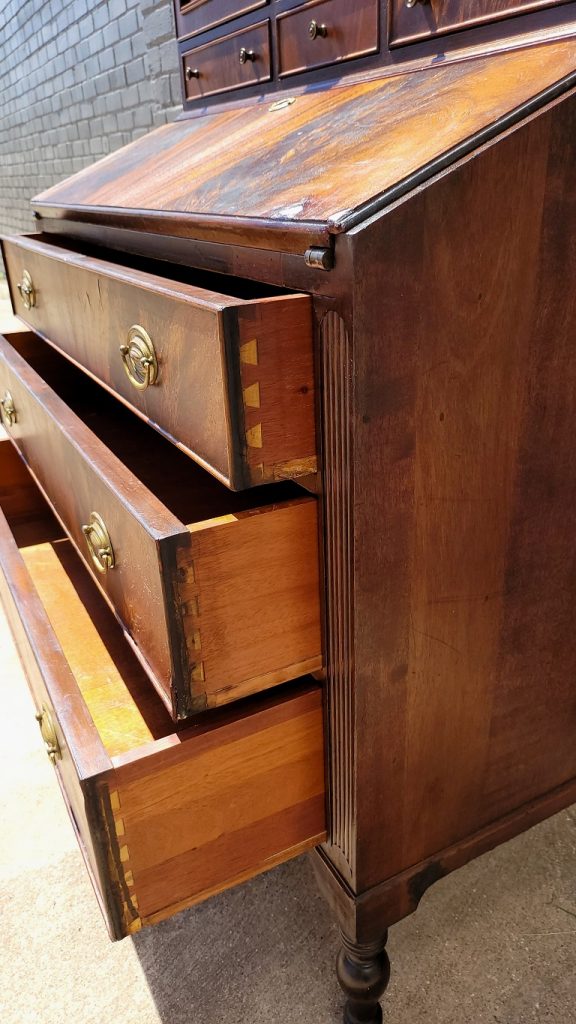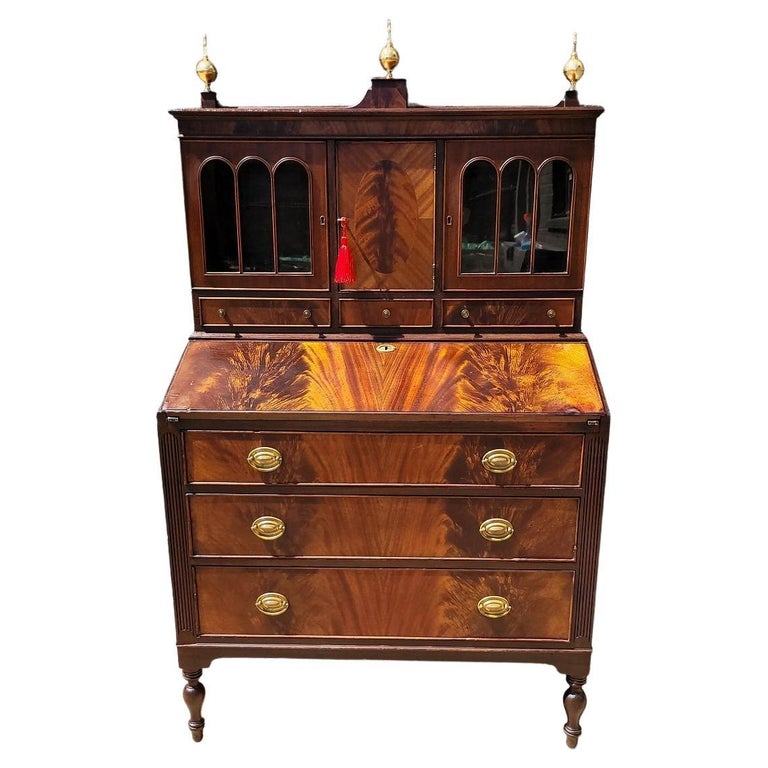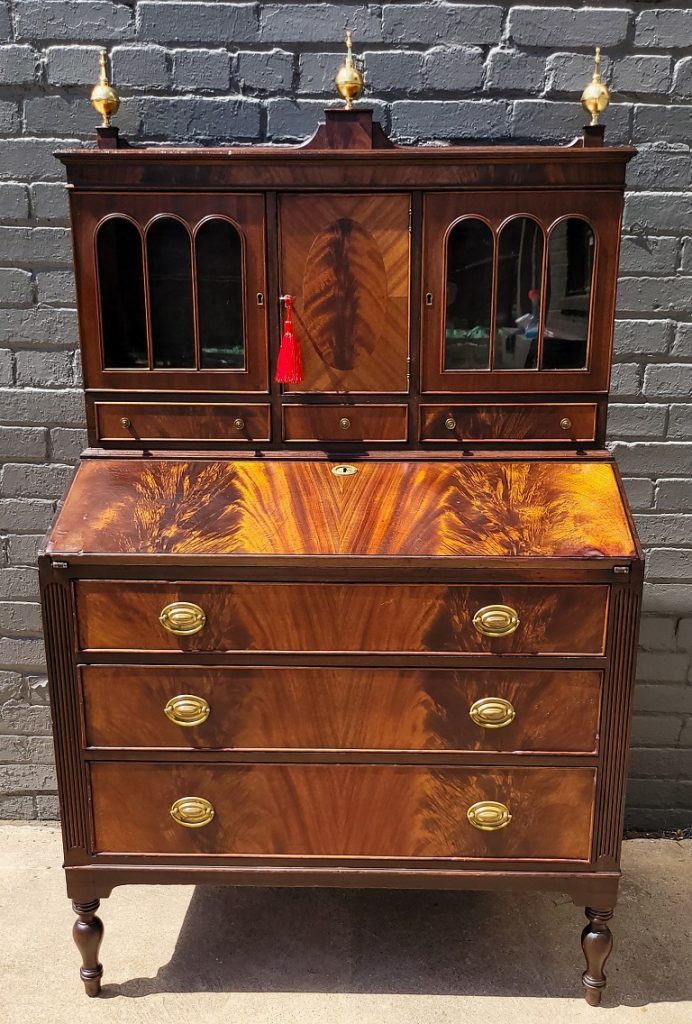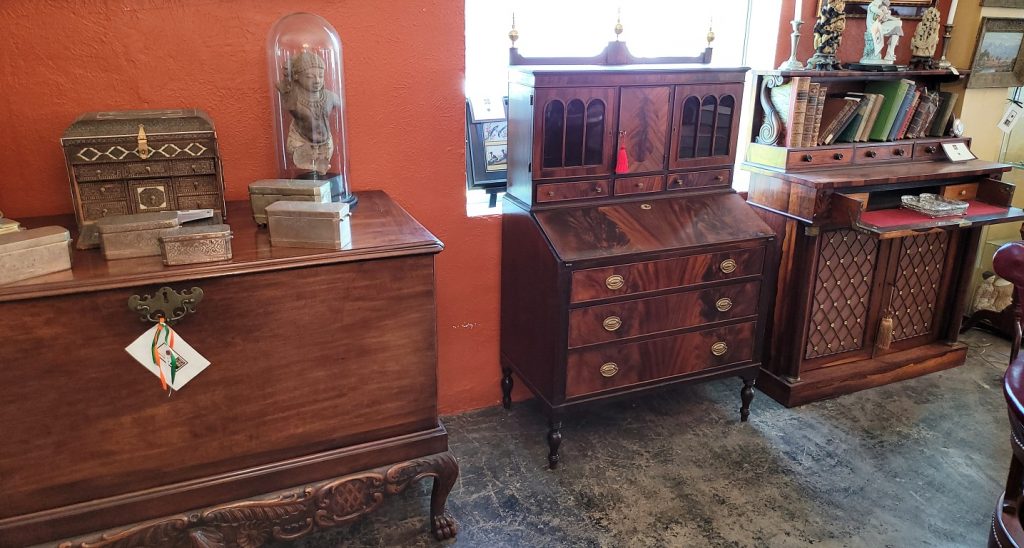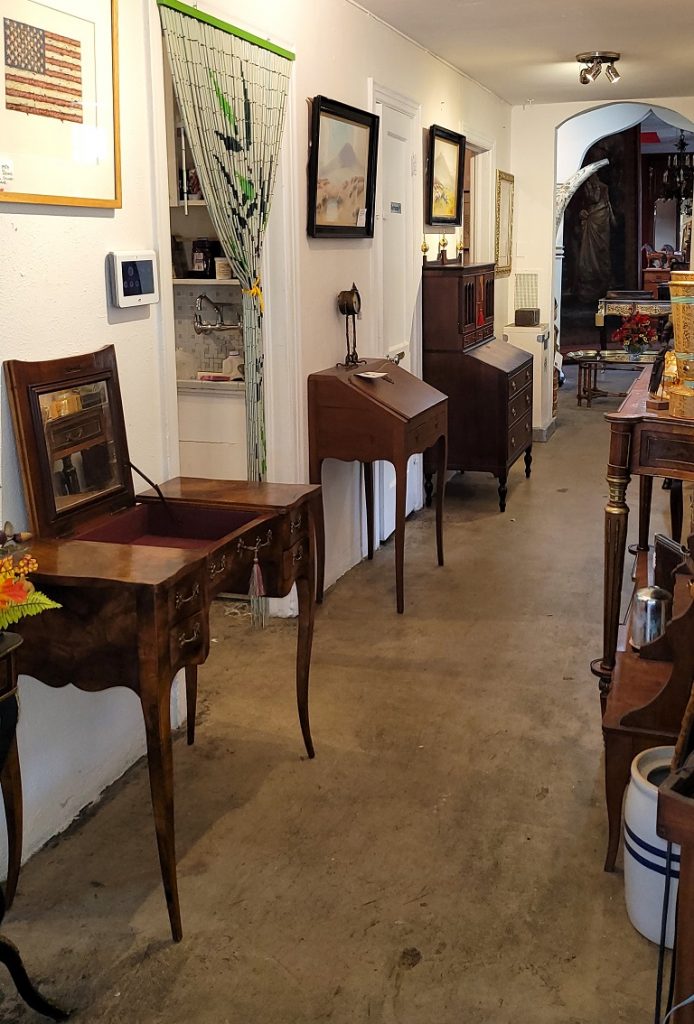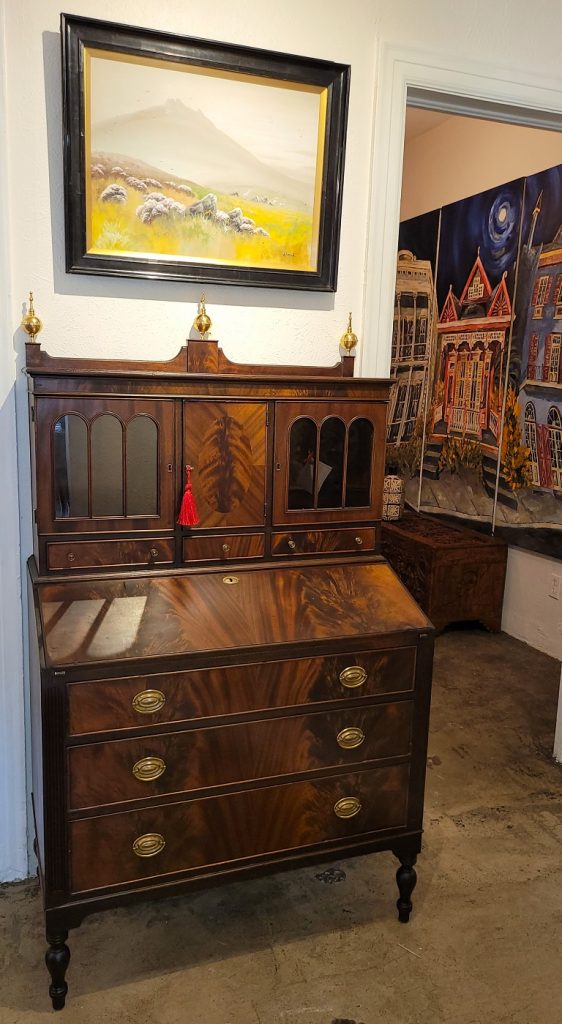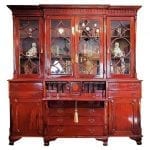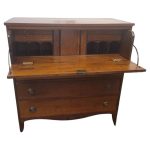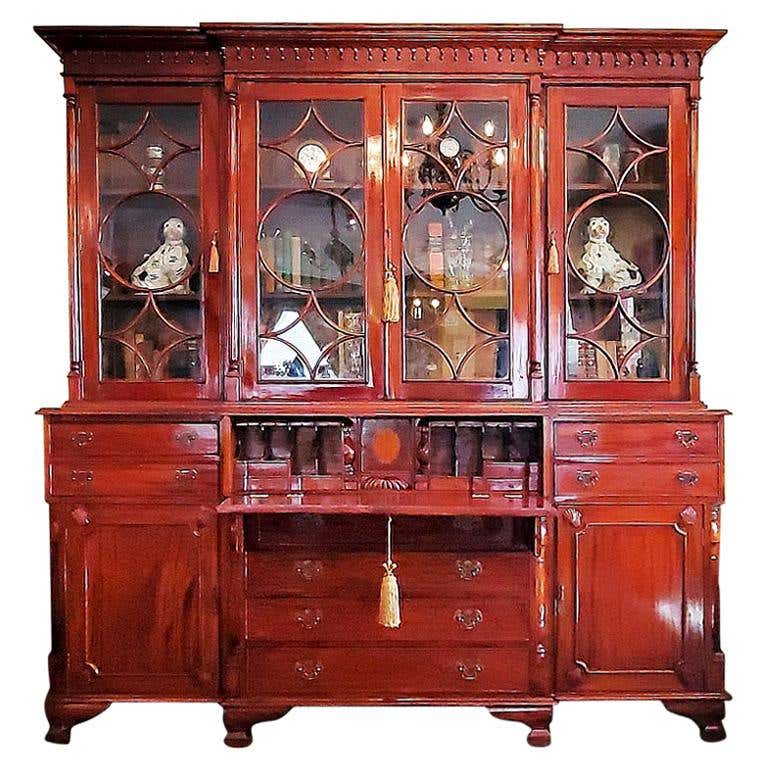Hepplewhite Style Apprentice Miniature Secretary Chest
PRESENTING A STUNNING Hepplewhite Style Apprentice Miniature Secretary Chest.
Made in England circa 1900-10 this piece is a miniature of much larger pieces in the same style.
Based upon the style, design and hardware it a reproduction of a Hepplewhite piece from the Regency Era of 1790-1820.
We are of the opinion that this miniature is in fact an ‘Apprentice Piece’. It is too large to be a salesman sample but to small to be full sized. Some people would say that perhaps it is a Child’s Secretary but I would totally disagree with that. Firstly, it is of too high a quality with exceptional flame mahogany veneers etc and secondly, it show zero signs of ever being used by what would be a very privileged child indeed ! My opinion is that this was made by an Apprentice who was working for a British furniture maker at the turn of the 20th Century as a piece to ‘hone’ his trade. He would have had access to the offcuts of wood and veneer from larger pieces being made.
It was not uncommon for employers to allow ‘apprentices’ to use these left over materials to make pieces for themselves which sometimes they would sell to make a little extra cash.
Whoever the employer was … they sure used the best veneers available as the flame mahogany veneer on this is simply GORGEOUS !!!
The piece stands at 58.5 inches tall (including finials) … 4 foot 8.5 inches Tall !!!
We had to photograph this outside to show off the gorgeous patina !
‘APPRENTICE’ PIECES, LIKE THIS, ARE HIGHLY COLLECTIBLE AND DESIRABLE!
The piece is one solid piece.
It has a pelmet on top with 3 plinths for finials. The finals on this are replacements but very sympathetic to what would originally have been there. Below the pelmet is a flat top which acts as a shelf.
The top section consists of 3 doors. A central; tabernacle style solid door which opens to reveal cubbie dividers for stationary, etc.
It is flanked by 2 Gothic Arch style doors with glass.
Under the doors are 3 drawers with brass pulls.
The central section is the secretary desk part of the piece with a slanted drop down front to reveal a workspace.
The bottom section consists of 3 graduating drawers with matching flame veneers and Hepplewhite Style hardware. The sides are fluted and reeded pillars.
The desk sits on 4 turned and fluted feet.
George Hepplewhite (1727? – 21 June 1786) was a cabinetmaker. He is regarded as having been one of the “big three” English furniture makers of the 18th century, along with Thomas Sheraton and Thomas Chippendale. There are no pieces of furniture made by Hepplewhite or his firm known to exist but he gave his name to a distinctive style of light, elegant furniture that was fashionable between about 1775 and 1800 and reproductions of his designs continued through the following centuries. One characteristic that is seen in many of his designs is a shield-shaped chair back, where an expansive shield appeared in place of a narrower splat design.
Very little is known about Hepplewhite himself. Some established sources list no birth information; however a “George Hepplewhite” was born in 1727 in Ryton, County Durham, England. According to some sources, he served his apprenticeship with Gillows in Lancaster, but the Oxford Dictionary of National Biography is sceptical about this. He was also a member of the London Society of CabinetMakers.
He based himself in London, where he opened a shop. After he died in 1786, the business was continued by his widow, Alice. In 1788 she published a book with about 300 of his designs, The Cabinet Maker and Upholsterers Guide, with two further editions published in 1789 and 1790. It was not until years after his death that his designs started to receive recognition. While some have attempted to attribute the furniture design to his wife Alice, there is no evidence that she was the original creative force behind the work beyond her publication of the reference guide after his death.
With contemporaries such as Thomas Chippendale producing pieces in a variety of styles, Hepplewhite’s famed style is more easily identifiable. Hepplewhite produced designs that were slender, more curvilinear in shape and well balanced. There are some characteristics that hint at a Hepplewhite design, such as shorter more curved chair arms, straight legs, shield-shape chair backs, all without carving. The design would receive ornamentation from paint and inlays used on the piece.
The book influenced cabinet makers and furniture companies for several generations. The work of these generations influenced in turn copies of the original designs and variants of them through the 19th and 20th centuries.
Link: https://en.wikipedia.org/wiki/George_Hepplewhite
Hepplewhite Style Apprentice Miniature Secretary Chest.
Provenance: From a Dallas Estate.
Condition: Overall quite good. Some minor repairs, mainly to front of desk top as is obvious from the photos. Finials are quality replacements.
Dimensions: 58.5 inches tall, 34 inches wide and 18.5 inches deep (desk closed).
With the drop down bureau shelf, fully open it is 28 inches deep
PRICE NOW: $4,800
